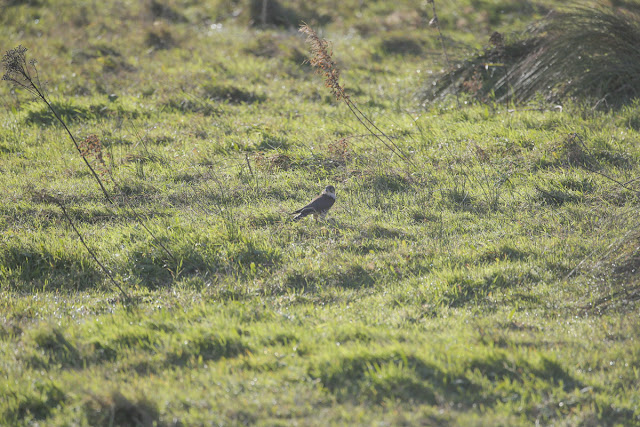There are numerous hides on the reserve,but I headed for the place that I saw them last!On entering the hide, another photographer was in position, and on enquiring with him, one bird had been present an hour earlier.So with that encouraging news,I set my stall.All was quiet for the next hour, save for a Heron patrolling the far margins, in the space of 20 minutes, it had caught 3 small roaches at least there was plenty of food about.
From out of nowhere a Kingfisher flew in and landed about 20 metres away on a known perch.Great,action at last! he never did much really, not even a dive, but I obtained a dozen or so shots with the camera!He was soon away though and again it went quiet for the next 11/2 hrs.The other photographer had had enough and made his way out.Action was quite slow really, even the Heron departed!
It really is a waiting game when I'm out with the camera, but I'm always confident that something will happen.If birds or mammals were constantly in view, it would be easy ,wouldn't it.I certainly don't mind a long wait.Sometimes of course, nothing happens, but 9 times out of 10 it does, keeping me on my toes and alert!I had the hide to myself, which is just how I like it.Kingfishers are prone to the slightest of movements and a hide full of chatting people is not good!
True to form, a Kingfisher returned to the same perch on the far bank.Again he wasn't in hunting mood, but what he did do, was to cough up a pellet, he had been hunting previously then.I managed a few shots of this regurgitation, after which, he preened for a while, then went about his travels.
So 3 hrs in the hide and about 3 mins of a Kingfisher,but I certainly wasn't complaining of lack of action.I,d set out to photograph a Kingfisher and luckily I achieved my goal, with a few decent images to boot.!Thanks again for looking in on my blog and I will catch up again with you soon!

















































